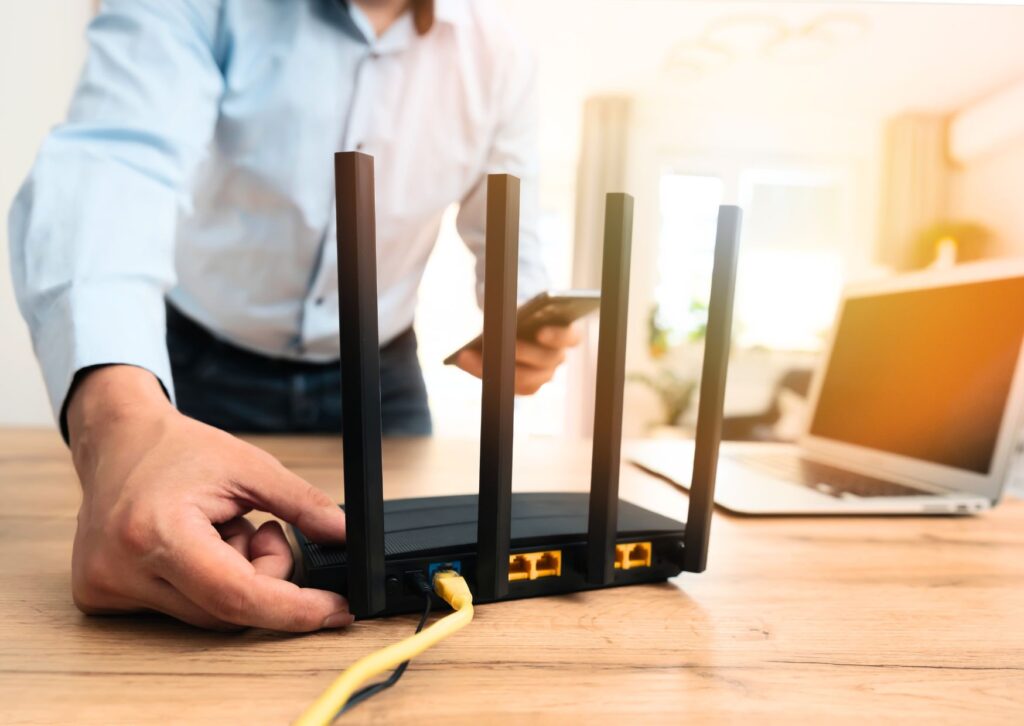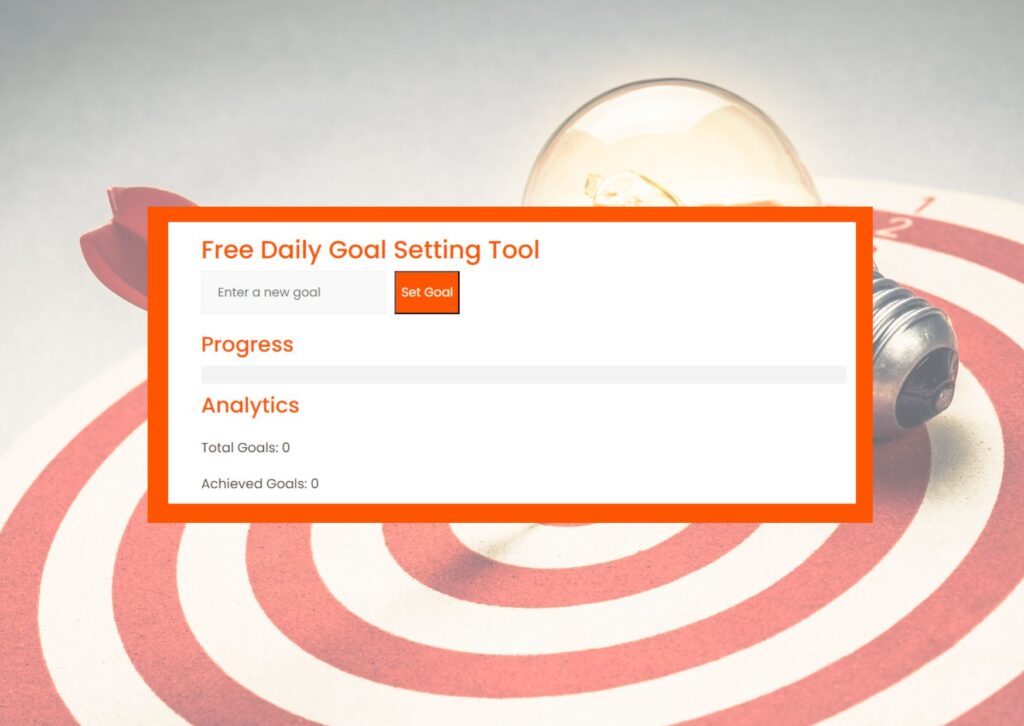10 Ways to Increase Productivity Working from Home
Maintaining productivity working from home has become a pivotal aspect of our modern work culture.
As many professionals make the shift to remote work, they encounter a unique blend of challenges that can influence their efficiency, productivity and overall wellbeing.
However, with the right approaches and a proactive mindset, working from the comfort of one’s home can rival, or even surpass, the productivity levels of a conventional office.
In this guide, we’ll explore the hurdles and advantages of remote work, offer ten detailed strategies to enhance your productivity, and suggest tools and resources to craft the perfect home office setting.
Whether you’re used to working from home or have just started, these insights aim to equip you with the knowledge to excel with your work-from-home productivity levels.
Contents
10 Ways to Increase Productivity Working from Home
The Benefits of Increased Productivity Working from Home
Tools and Resources to Boost Productivity Working from Home
Creating a Productive Home Office Environment
10 Ways to Increase Productivity Working from Home
The transition to remote work has reshaped the way we approach our daily tasks and responsibilities.
While the comfort of home offers undeniable advantages, it also introduces challenges that can hinder our efficiency.
To thrive in this setting, it’s essential to adopt specific strategies that cater to the nuances of a home-based work environment.
Here are some ways that can significantly elevate your productivity levels when working from home:
1. Craft a Dedicated Workspace
Your environment plays a pivotal role in influencing your mindset, focus, and productivity.
At home, multiple distractions, from the allure of the bed, to the TV in the living room, can divert your attention and disrupt your workflow.
Solution: Carve out a specific area in your home that is solely dedicated to work.
This space should be tailored to your needs, ensuring it’s comfortable and free from potential distractions.
Personalise it with ergonomic furniture, adequate lighting, and essential work tools.
By consistently working in this designated area, you train your brain to associate it with productivity, making it easier to get into the “work zone” each day.

2. Embrace Structured Task Management
Structure and organisation are the backbones of productivity, especially in a remote work setting.
Without the rhythm of a traditional office, tasks can become muddled, leading to inefficiencies and a lack of direction.
Solution: Begin each day with a clear plan.
Outline your tasks, categorise them based on priority, and allocate specific time blocks for each.
Tools like digital planners or task management apps can be invaluable in this process.
They allow you to visualise your day, set reminders, and track your progress.
By having a clear roadmap for the day, you ensure that your energy is directed purposefully, leading to more accomplished tasks and a heightened sense of achievement.

3. Implement Regular Breaks
Continuous work without breaks can lead to mental fatigue, reducing the quality of output.
At home, without the natural breaks that come from office interactions like coffee chats or short walks, one might find themselves glued to the screen for extended periods.
Solution: Adopt the practice of taking short, regular breaks.
Techniques like the Pomodoro method, where you work intensively for 25 minutes and then take a 5-minute break, can be highly effective.
These breaks serve as a mental reset, allowing you to return to your tasks with renewed focus.
Use this time to stretch, hydrate, or even take a quick walk outside.
It not only boosts your productivity but also ensures you’re taking care of your physical wellbeing.
Check out our blog “How Breaks at Work Can Skyrocket Productivity“

4. Minimise Digital Distractions
The digital world, while being a source of information and tools, can also be a significant source of distraction.
Notifications from social media, news apps, or even personal messages can constantly divert attention, breaking the flow of work.
Solution: Exercise digital discipline.
Start by identifying apps or websites that often sidetrack you from work.
Use app blockers or set your devices on “Do Not Disturb” mode during work hours.
Allocate specific times in the day for checking personal messages or social media, ensuring they don’t intrude into your focused work periods.
A method that works for me, is leaving my phone in a different room so it’s not easy to get distracted by it.
By creating boundaries and obstacles for digital distractions, you ensure that your work hours are maximised for productivity.

5. Stay Connected with Your Team
Collaboration and communication are integral components of most jobs, and they play a pivotal role in driving productivity.
Remote work can sometimes lead to feelings of isolation, making it challenging to stay in sync with team members or to communicate effectively.
Solution: Make it a point to regularly check in with your colleagues.
Use video conferencing for meetings to keep some of the personal connection you get from meeting in person.
Schedule weekly team catch-ups or one-on-one sessions to discuss tasks, share updates, and address any concerns.
This not only ensures that everyone is aligned but also fosters a sense of camaraderie and team spirit, which can be motivating.

6. Invest in Continuous Learning
The world is constantly evolving, and to stay productive and relevant, continuous learning is essential.
Working from home might lead to a sense of complacency, making it easy to overlook the importance of upskilling or staying updated with industry trends.
Solution: Dedicate time each week for self-improvement.
This could involve taking online courses, attending webinars, or simply reading articles and journals related to your field.
Ask your employer to provide wellbeing webinars to help you learn and support your wellbeing.
By staying informed and enhancing your skill set, you not only boost your productivity but also add value to your work.
This helps to ensure that you remain a vital asset to your team and organisation.

7. Optimise Your Home Internet Connection
A stable internet connection is the lifeline of remote work, ensuring seamless communication, access to resources, and uninterrupted workflow.
Home networks might not always be as robust or reliable as office setups, leading to disruptions, slow loading times, or connectivity issues.
I’ve previously learned the hard way and a slow internet connection has impacted my day negatively.
Solution: Invest in a good quality router and consider upgrading your internet plan if needed.
Regularly check for and install any firmware updates for your router.
If possible, use a wired connection for more stable internet.
For areas in your home with weak signals, consider using Wi-Fi extenders.
Ensuring a strong and stable connection not only reduces frustrations but also significantly boosts productivity.

8. Maintain a Healthy Work-Life Balance
One of the challenges of working from home is the potential blurring of boundaries between professional and personal life.
Without a clear separation, you might find yourself working longer hours, leading to burnout, or struggling to switch off from work.
This can negatively affect personal time and wellbeing.
Solution: Set clear start and end times for your workday and stick to them.
Once your workday ends, physically shut down your workstation and engage in activities that help you relax and disconnect.
This could be reading, spending time with family, exercising, or pursuing a hobby.
By maintaining a clear distinction between work and leisure, you ensure that you’re refreshed and rejuvenated for the next day, leading to sustained productivity.

9. Set Clear Priorities and Deadlines
With a multitude of tasks at hand, it’s essential to know what needs immediate attention and what can wait.
Without clear priorities, one might spend too much time on tasks that aren’t immediately crucial, leading to important tasks being delayed or rushed.
Solution: At the start of each week or day, list down all tasks and assign them priorities based on their importance and deadlines.
Use tools like digital calendars or task management apps to set reminders and track progress.
By having a clear view of what needs to be tackled first, you ensure that your efforts are directed efficiently, leading to better time management and productivity.

10. Seek Feedback and Continuously Adapt
Continuous improvement is the key to long-term productivity and growth.
Working remotely might reduce the frequency of feedback you receive, making it challenging to identify areas of improvement.
Solution: Proactively seek feedback from colleagues, superiors, or even clients.
Regularly review your work processes and identify any bottlenecks or inefficiencies.
Be open to new tools, techniques, or methodologies that can enhance your productivity.
By being receptive to feedback and willing to adapt, you ensure that you’re always evolving and optimising your work processes.

The Benefits of Increased Productivity Working from Home
As the dynamics of the modern workplace evolve, the merits of a productive remote work environment have become increasingly evident.
Beyond the obvious advantages of flexibility and comfort, optimising productivity while working from home brings forth a range of benefits that enhance both professional and personal aspects of life.
Here are some of the most prominent benefits:
Enhanced Work-Life Balance
The traditional 9-to-5 office routine, coupled with time-consuming commutes, often leaves little room for personal activities and family time.
A productive work-from-home regimen, on the other hand, offers a level of flexibility that’s hard to match.
Without the need to commute or adhere to strict office hours, individuals can design their work schedules around personal commitments.
This means being able to attend a child’s school event, take a mid-day fitness break, or even indulge in a hobby without compromising work responsibilities.
Over time, this balance contributes to improved mental wellbeing, reduced stress, and a more fulfilling life.
Cost Savings
The financial benefits of working from home extend beyond just the individual.
On a personal level, eliminating daily commutes translates to savings on fuel, vehicle maintenance, and public transport costs.
Additionally, there’s a noticeable reduction in daily expenses such as meals, coffee, and professional attire.
These savings, when accumulated over months, can be significant.
For businesses, a remote workforce can lead to reduced overheads.
There’s less need for expansive office spaces, utilities, and in-house amenities.
This not only results in direct cost savings but also allows businesses to allocate resources more efficiently, investing in areas that drive growth and innovation.

Increased Focus and Fewer Distractions
The bustling environment of a traditional office, with its frequent meetings, office chatter, and other interruptions, can sometimes hinder deep, focused work.
In contrast, a well-organised home workspace can serve as a haven for concentration.
By minimising potential distractions and creating a conducive work environment, individuals can delve deeper into tasks, leading to higher quality output in shorter time frames.
Of course, it’s essential to strike a balance and ensure that the home environment doesn’t become too isolating, but with the right setup, the potential for enhanced focus is significant.
Better Health and Wellbeing
Working from home provides an opportunity to prioritise health and wellbeing in ways that might be challenging in a conventional office setting.
Without the constraints of fixed lunch hours or the temptation of fast-food restaurants, individuals can opt for healthier meal choices or even take the time to prepare fresh meals.
Additionally, the flexibility in schedules means there’s more room to incorporate regular exercise routines, be it a morning yoga session or an afternoon walk.
Over time, these healthier habits contribute to improved physical health, increased energy levels, and a more positive mindset.
This all feeds back into enhanced productivity.

Customised and Comfortable Work Environment
Every individual has their own preferences when it comes to a work environment.
Some might thrive in a brightly lit room with soft music playing in the background, while others might prefer a quiet space with dim lighting.
Traditional office setups often don’t offer the flexibility to customise one’s workspace.
However, working from home allows individuals to tailor their environment to their preferences.
This personalisation can lead to increased comfort, reduced strain, and, consequently, heightened productivity.
Whether it’s choosing ergonomic furniture, setting the room’s temperature, or selecting the perfect playlist, having control over one’s environment can make a significant difference in work output.
Reduced Environmental Impact
The environmental benefits of remote work are noteworthy.
With fewer people commuting daily, there’s a significant reduction in vehicle emissions, contributing to cleaner air and reduced carbon footprints.
Additionally, with fewer office utilities in use, such as lighting, heating, or cooling, there’s a decrease in energy consumption.
Companies can also adopt digital solutions, reducing the need for paper and contributing to environment protection.
In the long run, as more businesses adopt remote work models, the cumulative environmental benefits can be substantial, making it not just a productive choice but also a sustainable one.

Flexibility in Work Hours
Not everyone’s peak productivity hours align with the traditional 9-to-5 schedule.
Some individuals might be night owls, finding their stride in the late hours, while others might be early birds, accomplishing most before noon.
Working from home offers the flexibility to choose work hours that align with one’s natural rhythm. (Depending on job role demands)
By capitalising on times when they’re most alert and focused, individuals can produce higher quality work and tackle tasks more efficiently.
Increased Autonomy and Empowerment
Remote work inherently requires a level of trust from employers, as they’re not overseeing employees in a physical office.
This trust often translates to increased autonomy for employees, allowing them to take greater ownership of their tasks and manage their responsibilities without constant supervision.
This sense of empowerment can boost confidence, job satisfaction, and motivation, leading to a more proactive approach to work and, ultimately, enhanced productivity.
In Susan Fowler’s book “Why motivating people doesn’t work” she talks about the human need for autonomy and how it can help us feel more motivated.
Working from home can give that autonomy, potentially leading to increased motivation, which can lead to increased productivity.

As you can see from above, there are a range of benefits to working from home.
However, it’s important to ensure these benefits align with your work from home experience.
Depending on your company protocols, not all may be relevant.
Tools and Resources to Boost Productivity Working from Home
The success of remote work is often intertwined with the digital tools and resources that support it.
These platforms not only simplify tasks but also foster collaboration, and boost overall efficiency.
Here are some tools and resources that can be aid those working from home:
Task Management and Organisation Tools
In the realm of task management, platforms like Trello and Asana stand out.
They offer intuitive interfaces that allow users to visually organise tasks, set deadlines, and assign responsibilities.
Trello’s card-based system is perfect for those who appreciate a drag-and-drop approach, making project management feel almost like a tactile experience.
There’s also Asana.
With its list and timeline views, it’s ideal for those who prefer a structured layout.
Both platforms provide a clear snapshot of ongoing projects, ensuring that team members remain aligned and can monitor progress in real-time.
If you’d like an easy-to-use free daily goal setting tool, we’ve got you covered.
Check out our free daily goal setting tool here!

Communication Tools
Effective communication is paramount, especially when teams are dispersed geographically.
Slack revolutionises team communication by offering a platform that feels like instant messaging but is tailored for professional use.
With dedicated channels for specific projects or departments, it ensures that conversations are organised and relevant.
Zoom, on the other hand, has become synonymous with video conferencing and meetings.
Whether it’s a team meeting, a client presentation, or a casual catch-up, Zoom offers a reliable platform for face-to-face digital interactions.
Its features, such as screen sharing, breakout rooms, and recording capabilities, make it a versatile tool for various communication needs.
Why not check out our blog “15 fun wellbeing activities for team meetings”
Documenting and Collaboration Tools
The ability to collaborate on documents in real-time is extremely beneficial for remote teams.
Google Workspace, encompassing tools like Docs, Sheets, and Slides, allows multiple users to work on a document simultaneously.
This real-time collaboration, coupled with features like commenting and version history, ensures that teams can work together seamlessly, even from different corners of the world.
Microsoft Teams, integrated with Office 365, offers a similar collaborative experience but within the familiar confines of tools like Word, Excel, and PowerPoint.
The platform also doubles up as a communication tool, making it a comprehensive solution for team collaboration.

Time Management Tools
Time is a precious commodity, and managing it effectively can significantly boost productivity.
RescueTime offers insights into your digital habits, tracking the time spent on various apps and websites.
By understanding where your time goes, you can identify potential distractions and optimise your work patterns.
For those who find that the right kind of music enhances concentration,
Focus@Will is a gem.
Based on neuroscience, it offers curated playlists designed to improve focus and prolong attention spans, making it easier to delve into deep work sessions.
Secure File Sharing Tools
In today’s digital age, sharing files securely and swiftly is a routine requirement.
Dropbox provides a cloud-based solution where files can be stored, shared, and collaborated upon.
Its syncing capabilities ensure that you have access to your files from any device, anytime.
WeTransfer, on the other hand, simplifies the process of sending large files.
With a straightforward interface and no need for sign-ups, it’s perfect for quick, hassle-free file transfers.
Incorporating these tools into your daily routine can transform your work-from-home experience.
This will help to ensure that tasks are tackled efficiently, communication flows smoothly, and collaboration is effortless.

Creating a Productive Home Office Environment
The environment in which we work plays a pivotal role in influencing our productivity levels.
When working from home, it’s crucial to create a space that not only facilitates work but also promotes focus, minimises distractions, and enhances wellbeing.
Here’s a comprehensive guide to crafting a home office environment that’s conducive to productivity:
Choose the Right Location
The location of your home office can make a significant difference in your ability to concentrate.
Ideally, choose a quiet spot away from the disturbances of household activities.
If possible, a separate room with a door can be ideal, as it provides a clear boundary between work and leisure.
However, if space is a constraint, even a quiet corner in a bedroom or living room can suffice, as long as it’s designated solely for work.

Invest in Ergonomic Furniture
Comfort is paramount when spending long hours at a desk.
Invest in ergonomic furniture that supports good posture.
An adjustable chair with lumbar support, a spacious desk, and possibly a sit/stand desk converter can make your workspace comfortable and reduce the risk of physical strain.
Remember, your work setup should cater to you, ensuring that your screen is at eye level and your feet rest flat on the ground.
It’s also important to remember that movement is important.
Ergonomic furniture is great, but regular movement throughout the day will help with overall wellbeing.

Optimise Lighting
Good lighting is essential not just for visibility but also for reducing eye strain and enhancing mood.
Natural light is ideal, so if possible, set up your workspace near a window.
However, ensure that the light doesn’t cause screen glare.
Ideally the light will be Infront of you so it doesn’t glare on your screen.
For darker hours or spaces without ample natural light, invest in LED lamps or task lighting that illuminates your workspace without being too harsh.
Minimise Distractions
In a home environment, distractions are everywhere, from household chores to TV or even pets.
While some distractions are unavoidable, take proactive measures to minimise them.
This could mean setting specific ground rules with family members, using noise-cancelling headphones, or even putting up a “Do Not Disturb” sign during work hours.

Personalise Your Space
While functionality is crucial, a touch of personalisation can make your home office a space you enjoy spending time in.
Add plants for a touch of greenery, hang artwork or motivational quotes, or even choose office supplies in your favourite colours.
These personal touches can make the space feel uniquely yours, boosting morale and motivation.
Stay Organised
Clutter can be a significant deterrent to productivity.
Ensure that everything has its place, be it physical files, stationery, or digital devices.
Investing in storage solutions, like shelves, filing cabinets, or even desk organisers, can help keep your workspace tidy.
A clean and organised desk can enhance focus and make tasks feel more manageable.

Tech and Connectivity
While working from home, a reliable internet connection and the right tech tools are non-negotiable.
If you find any lag or issues, consider upgrading your internet plan.
If need to, upgrade your computer and add more screens.
Also, investing in a high-quality webcam and microphone can make a big difference during online meetings.
I use a microphone for online meetings and others often mention how clear I sound.
By paying attention to the methods above, you can craft a space that not only supports your work tasks but also promotes wellbeing and efficiency.
Remember that the journey to optimising productivity from home is as unique as you are.

While the tools, tips, and setups we’ve discussed can provide a solid foundation, it’s essential to find what resonates with you personally.
Experiment, adjust, and most importantly, ensure that your workspace feels right for you.
After all, the beauty of working from home lies in the flexibility it offers.
So, embrace the process, and here’s to a more productive, comfortable, and fulfilling work-from-home experience.
Author
Tyler Lowe – Health & Wellbeing Speaker
BSc Sport & Exercise Rehabilitation


